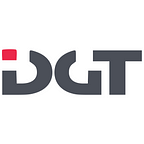OUR CASES ARE BBC SYNERGIES
BGX works best when there are cross-industry businesses willing to work together to extract maximum profit from their loyal followers.
It might not be an intuitively available thought. That is why we urge you to imagine these three basic application cases with us.
- CONTENT PROVIDER <-> NODE HOLDER
Let’s say that on one end, we have a movie studio (let’s call them 22nd Century Fox) seeking new ways to deliver content to more people. Fewer folks are watching TV nowadays and piracy is rampant.
On the other end, we have AT&P, a Telecom company — whose main profit is squeezed by smaller margins, while their total market is almost fully tapped. They are already seeking to earn from bringing digital content into homes.
While AT&P can make a deal with 22nd Century Fox directly, they can go a smarter way. AT&P can join BGX and have access to content from 22nd Century Fox, Columbia Sounds, as well as hundreds of smaller movie studios across the world — providing them with diversified content, without the need to create any of their own. Moreover, since BGX is also a delivery network — they do not have to build an infrastructure to join, just provide access to their users. AT&P itself will hold a node and process (& earn from) each transaction their user makes in interacting with the content.
Meanwhile, 22nd Century Fox doesn’t have to make a deal with AT&P directly. They join the BGX Network and access the users of AT&P, as well as those of TT-Mobile, Virginia Mobile, and other networks. That’s a far more powerful channel.
2. BUSINESS WITH FOLLOWERS <-> NODE HOLDER
Let’s say Starpucks wants to join the BGX network. Instead of having blank loyalty cards, that don’t enable them to truly get to know their customers, Starpucks emits S-Coins (using the white-label BGT coin emitted on BGX).
Every customer of Starpucks now gets 50 S-Coins for their every purchase or a bunch of S-Coins when they sign up for the Starpucks app. These coins are redeemable at any business of the BGX Network, say — AT&P gives free data for a month for 1000 S-Coins.
Starpucks creates a value-added service that the other coffee shops can’t match.
AT&P gets introduced to Starpucks coffee buyers (like 38 million of Americans each month) and the steady oligopoly where they hold 30% of the market is about to tip massively in their favour.
What has formed is like an airline alliance, except an Alliance where those earning more from cooperation are companies from different industries.
If Starpucks and AT&P decide to form a partnership now, who knows how long will it take for them to build an infrastructure for it? And if they build it after a year of expensive R&D, it will be exclusive to them only. The real power starts when participants of other industries join the cooperative too.
3. LOCAL BUSINESS <-> NODE HOLDER
A local light shop, say it’s named Lights On is located in a small, but charming city Fargo, North Dakota.
One of the BGX node holders, say AT&P, is taking an interest in helping local shops. AT&P provides its users with an ATP coin when users sign up for its services, which can be used at any local shop that’s part of the BGX network.
Now that’s extra value to the “Fargo-ans” (“Fargonians”?) that are choosing which telecom to join. Not just residents of Fargo benefit, but residents of every village, town or city where enough businesses joined the BGX network.
Meanwhile, Lights On gets an instant boost in traffic when the city dwellers that have joined one of the largest service network are interested in shopping specifically with them.
Now that’s stronger than just Trip Advisor ratings.
By allowing an additional Business 2 “Business” 2 Customer participant, we avoid the “chicken and the egg problem”. The business that holds the nodes is the one bringing the customers, while the business that sells the digital goods (and loyalty is certainly a digital good) — brings the value.
The BGX’s value is building a bridge to connect many businesses to many businesses by ensuring easy integration and cost-effectiveness of the system.
In our examples, it was the telecom company AT&P that held the nodes. In reality, the nodes can be held by any business (a professional node-holder) that has:
(1) the required DEC token balance;
(2) technological infrastructure that they need to utilize to maximum profit;
(3) a defined user base that they want to get more returns from;
(4) and of course a certain ambition to survive in the economy of tomorrow.
